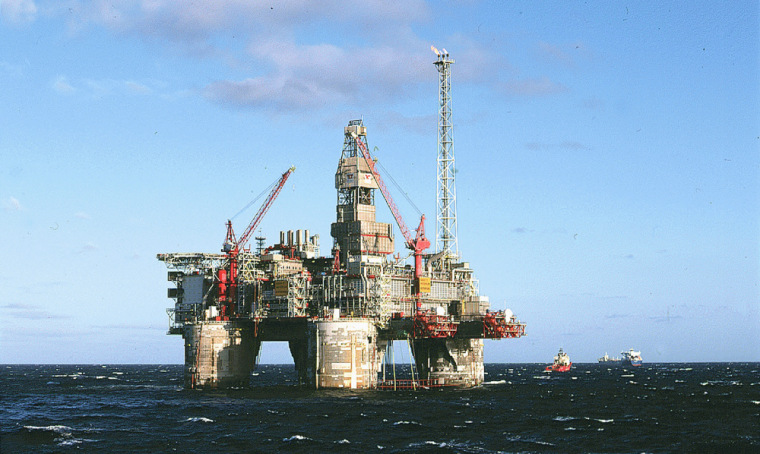Energy groups Statoil and Shell plan the world’s biggest project to bury carbon dioxide beneath the seabed in a billion-dollar project off Norway to raise oil output and curb global warming, the firms announced Wednesday.
It would be the world’s first project to use carbon dioxide to boost oil recovery offshore, though the gas has been injected into onshore oilfields in Texas, company officials said.
Norway’s Statoil and Anglo-Dutch Shell said the plan, due to start in 2010-12 and include construction of a gas-fired power plant in west Norway, would need “substantial government funding and involvement.”
“If we succeed, this technology can be used at other fields off Norway and internationally,” Statoil Chief Executive Helge Lund told a news conference.
“This is an important milestone for Shell towards our vision for greener fossil fuels with part of the carbon dioxide captured and sequestrated underground,” added Shell Chief Executive Jeroen van der Veer.
CO2 from proposed power plant
Under the scheme, Statoil would capture CO2 from a huge, 860-megawatt natural gas-fired power plant to be built at the company’s Tjeldbergodden methanol complex in central Norway.
The CO2 would then be piped to Shell’s Draugen oilfield off Norway — and later also to Statoil’s Heidrun field — and injected into undersea reservoirs, to force oil to the surface.
Lund estimated that the plan, which could bury 2-2.5 million tons of heat-trapping carbon dioxide a year, would cost from $1.2-$1.5 billion.
Half of that would go to building the power plant, and the other half to building the CO2 capture system and pipeline to the field, Lund said.
“And then we have to do much more work over the next year or so to understand the costs and associated revenues connected to increased oil recovery,” Lund told Reuters.
He declined to say how much the government should pay, but said that without support the project would be uneconomical. Many other firms have been put off by high costs of similar CO2 storage projects, which could help slow global warming.
Norway government receptive
Environment Minister Helen Bjoernoy welcomed the plan as a “showcase for Norway as an environmentally friendly technology nation.” But she did not say how the government would help.
If things go as planned, a final decision to invest could be made by the end of 2008, the power plant started in 2010-2011 and the first CO2 delivered to Draugen in 2011-2012, Lund said.
“We see that both Heidrun and Draugen have reservoir conditions suitable for enhanced oil and gas recovery, but we have to do more work to be precise on that,” Lund told Reuters.
CO2 from burning fossil fuels is the main gas blamed by many scientists for blanketing the planet and driving up temperatures, threatening more droughts, floods, heatwaves and raising sea levels.
Many other oil companies are also looking at ways to cut carbon emissions. Projects for capturing and storing at least a million tons of CO2 a year are already operating in Canada, Algeria and Statoil’s Sleipner field off Norway.
In Texas, about 30 million tons a year is injected to help boost oil recovery at onshore fields under projects that started in the 1970s before climate change was a worry.
Use of natural gas in power plants is welcome in many countries as a cleaner alternative to dirtier coal or oil. But it is controversial in Norway, which generates almost all its electricity at non-polluting hydropower plants.
Norway, the world’s number three oil exporter behind Saudi Arabia and Russia, is also running out of rivers to dam and needs to raise electricity output to cover growing demand. The gas-fired plant would help avert a power shortage in the region.
